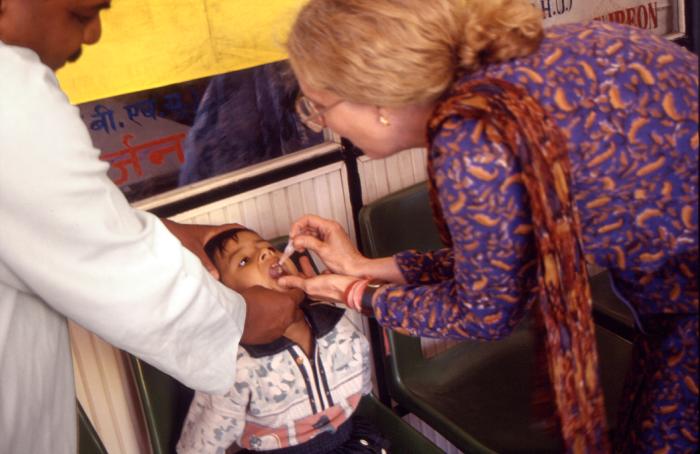The last naturally occurring case of indigenous smallpox was diagnosed in Somalia on 26 October 1977. The once devastating viral disease is estimated to have killed some 300 million people in the 20th century alone.
Thanks to the yeoman’s work of many in getting people around the globe vaccinated, this scourge is now part of the history books.
Two other infectious diseases, one viral, one parasitic, appear to be getting closer and closer to hopefully soon gain the same status as smallpox–polio and Guinea worm disease.
Let’s just go back a few short years…

It’s been nearly four years since India reported a polio case. It has since been declared polio-free. An amazing feat for a country that in 1985 reported some 150,000 cases of polio. This had fallen to about 6,000 in 1991, to 741 in 2009 and to just 42 in 2010. In fact, in 2009, India had half of the reported cases of polio worldwide.
Some that are old enough to recall this may have thought that India becoming polio-free was an insurmountable task; however, it was indeed achieved.
Even looking at the polio situation in 2014 alone looked somewhat bleak. Pakistan reported over 300 polio cases alone and internal strife and beliefs were the reason polio workers who traveled the country to vaccinate children were murdered in cold blood.
However, as 2015 closes in on the halfway mark, polio cases in the three endemic countries are extremely low. Pakistan, which saw so may cases last year, have reported only two dozen cases to date, a dramatic difference.
Neighboring Afghanistan, a country whose polio cases are usually linked to Pakistan has only reported two cases during the first five-plus months.
The third endemic country of Nigeria, which only reported six WPV-1 cases in 2014, has not seen a case in nearly a year (The most recent case had onset of paralysis on 24 July 2014 in Sumaila Local Government Area (LGA), southern Kano state).
Perhaps The Polio Eradication and Endgame Strategic Plan 2013–2018 may indeed achieve it’s objective of a polio-free world by 2018.
Guinea worm disease, a parasitic infection caused by roundworm, Dracunculus medinensis, may be the next human infectious disease to be eradicated and the first without the use of vaccines.
To put in perspective, when the first international campaign to eradicate the parasitic disease in 1986 commenced, there were an estimated 3.5 million Guinea worm cases occurring annually in Africa and Asia.

Image/Video Screen Shot
However, thanks to great work by organizations like the Carter Center, in 2014, only 126 cases were reported in four countries, with South Sudan being host to 56 percent of the cases, or 70 total.
How are we doing in 2015?
According to the World Health Organization (WHO) last month, the number of Guinea worm disease cases reported from January to April this year is only 3 confirmed cases. All of the cases have been reported from Chad, where an unusual disease epidemiology has been reported in the canine population, with several dogs harboring worms genetically identical to those occurring in humans.
Notice I didn’t mention South Sudan? That’s right, thanks to sustained efforts to interrupt transmission of dracunculiasis in the country this year, South Sudan has seen zero cases reported for the past 5 months.
Considered a neglected tropical disease, Guinea worm disease (dracunculiasis) is contracted when people consume water contaminated with Guinea worm larvae. After a year, a meter-long worm slowly emerges from the body through a painful blister in the skin. In the absence of a vaccine or medical treatment, the ancient disease is being wiped out mainly through community-based interventions to educate and change behavior, such as teaching people to filter all drinking water and preventing contamination by keeping anyone with an emerging worm from entering water sources.
Will one or both of these infectious agents join smallpox in that elite category of eradicated diseases in the next year or two? I can’t be sure; however, it seems the odds are getting better all the time.


2 thoughts on “Polio and Guinea worm disease: Four decades after smallpox, are these the next human diseases to be eradicated?”